I’ve written a healthy number of articles about edible plants that can be found in the wild or even in your own garden; so let’s take a break from that and talk edible grubs and bugs. While not pleasant to consider, this knowledge could be a vital necessity if you ever find yourself in an emergency situation.
1. Ants
These are the first of many tasty treats you can turn to in time of need. As a boy in grade school these were the first insects I can recall eating; probably on a dare. Most species are edible and you will find the flavor slightly sour and tangy; this is because the ants secrete an acid when threatened. The big juicy queen ants obviously have more fat on them than the little workers and are preferred for nutritional value.
Also consider eating the larvae. The larvae have no sour flavor and can often be found in clumps under rocks or towards the top of and hills when they are being moved or kept warm. If you’ve ever kicked an anthill open then you’ve seen the white larvae.
Learning from chimpanzees we know that one easy way to harvest an and hill is to put a stick on an ant hill and wait for it to get covered with ants; shake it into a sealable container and you have a handy road snack. While the lid will suffocate them, this will also allow them to secrete more acid. Roasting them right away will prevent this.
2. Slugs
Okay, these little buggers gross me out as a food source; and to be quite honest I think it would take an emergency for me to consume them; but then again, if they fried in butter and garlic like escargot, they might not be too bad. Not very many studies have been done on their nutritional value, but it is likely similar to that of snails. But keep a reign on your appetite and don’t run out to the garden quite yet; there are a few things you need to consider when preparing these guys.
Slugs (and snails) tend to be host to a parasite called rat lungworm. As you probably already guessed; they pick up this parasite by eating the feces of infected rodents. If you eat these slugs raw the parasites not only live in their bodies but produce a toxic reaction called eosinophilic meningitis. Meningitis is an inflammation of the meninges, a sheath surrounding the brain; and can cause severe brain damage. The easy way to avoid this is to cook them; sorry, you won’t be adding them to your sushi or sashimi any time soon.
Slugs and snails also eat some things we can’t like toxic plants and fungi; in additional to excrement. So, like escargots, most people purge their digestive tracks by putting the snails in a container with corn meal, oats, or some other bland starch for a week. This we they excrete potentially toxic waste and fatten up on the grain. You may not be able to wait an entire week for food, so you might consider chopping the slug’s heads off and pulling out the guts; they will shrink substantially and your hands will be disgusting; but you’ll be confident of what you are cooking up.
3. Snails
And in continuation of where we just went lets jump straight into snails. I’ve only ever tried these in escargots, and their not too bad. If you are prepping these take all the above cautions when preparing them. Snails don’t have as high of a tendency to eat fecal matter as slugs do so they are a safer bet when choosing between the two; but they do still consume some fungi that are toxic to humans. Rather than trying to gut them like a slug; you might consider steaming them, slitting open their bellies, and remove the guts at that time. The typical method of preparation is to steam them for 5 to 10 minutes, remove from the shell, and sauté.
4. Crickets
I’ve had these guys fried in a little butter and salted; they’re not actually that bad. Most cultures that eat these prefer them pan fried or oven toasted. I prefer removing the legs before I eat them; they seem like they might be an irritant.
A simple trick to catching crickets is a mason jar with bait. Bury the Mason jar with the top level with the ground around it in an area with a notable cricket population, and then bait it with a little bit of fruit or bread or whatever else is available. Let it sit over night; and then put the jar on it in the morning. Poke holes in the lid if you want to keep them alive. As a variation you can also put water in the jar which will which will drown the crickets.
5. Grasshoppers
Like crickets, I’ve eaten these in similar fashion, and they aren’t too bad either; once the legs are removed. These guys life in the same areas of crickets and can be caught the same way. Grass hoppers are larger than crickets and easy to catch, even by hand. This may sound odd, but large groups of grasshoppers in fields can actually be herded by a few people into a tarp.
6. Earthworms
Common earth worms are actually an invasive species into America, introduced from Europe; “f the 182 taxa of earthworms found in the United States of America and Canada, 60 or almost 33% are invasive species.” They are highly nutritious and readily obtainable. Worms come out en masse during heavy rains when the ground becomes saturated with water. Their bodies are filled with dirt and the worms can taste sandy and unpleasant to eat. Soaking them in water for 3 to 24 hours will purge the worms of this dirt; or you can take it in your hands and squeeze and ringing the dirt out with your fingers. After purging the flavor is a little better but still slightly bitter; nothing to write home about. They can be dried; which improves the flavor and reduces the sliminess; or they can be added to stews and such, or just fried. Survivalists typically suck these guys down raw. On another dare in my youth I tried these raw, and while the flavor did have a nice earthy undertone to it; I could do without.
7. Maggots
Learning that these were edible was not overall surprising, though I’ve never considered eating them before. Survivalists actually name these little grubs a traditional super food. Historically many cultures have actually relished these things; leaving fish and meat out to become saturated with them and then eating them raw; I’d probably have just gone for the fresh meat, but that’s me. The logic to this diet is that exclusively eating lean meats like rabbit will eventually lead to kidney failure and death; aptly named “rabbit starvation.” Early trappers in the North America were often susceptible to this form malnutrition due to the lack of carbohydrate and fat to balance their diet. Despite eating as much as they could the lean meat led to diarrhea, malnutrition, and eventually to a starvation style death.
Maggots are an amazing source of fat and amino acids, making them far more nutritionally valuable than lean meats. Maggots don’t have internal digestive systems so they secret gastric juices into the meat that “predigest” it. This is one of the things that make meat degrade and spoil. Maggots flavor will vary depending on what its food source is.
8. Aphids
Aphids are edible but tiny, and in my opinion not really worth the trouble.
9. Termites
I first tried eating these little guys while on a trip to Belize. One of the locals showed me how to poke a hole in the termite nest and then use my sticky tongue to press against the scurrying insects and eat swallow them down; I thought they tasted a lot like dirt. I have never eaten any large enough to merit toasting, but I understand they have a pleasant and slightly nutty flavor. They are high in oil and the one with wings (alates) are larger and fattier. Where alates exist in abundance they are collected with a light and night and nets.
10. Sowbugs
My wife and kids call them pillbugs and rolly pollies, I grew up calling them potatobugs; but I’ve never tried eating them. If you garden then you know these things are everywhere, especially under bits of wood and rocks. They can be eaten fresh or toasted, and are highly nutritious. To prove to my daughters that these were edible I ate a few the other day while weeding; a nice crunch but they taste like dirt.
11. Earwigs
Earwigs are edible too. Prepare them the same as termites or sowbugs. A couple of tactics for gathering them come from gardeners who disdain these little fellas. Fill low-sided cans with a half inch of vegetable oil (or other liquid, food-grade oil) and place them on the ground. Earwigs will find their way in and drown. Or, alternatively, a beer bottle with a bit of stale beer left in it will attract earwigs. Strain, toast and serve.
End notes:
These are just a few of the many edible creepy crawlies. I’ll put together an additional article one of these days after a little more research. Large portions of this article, aside from personal experience, came from Mother Earth News, edible insects. These species are primarily selected because they are common to my locale.
Jon

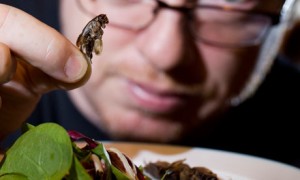
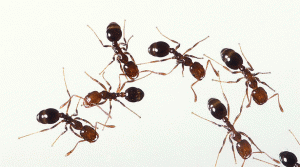


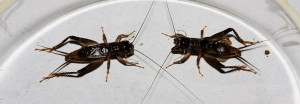
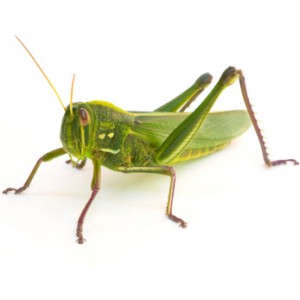
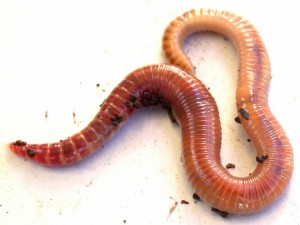
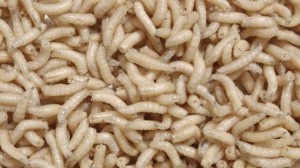
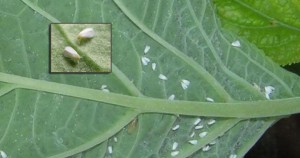
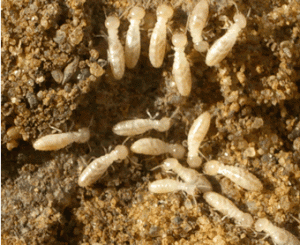

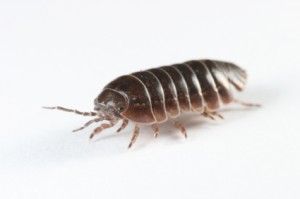
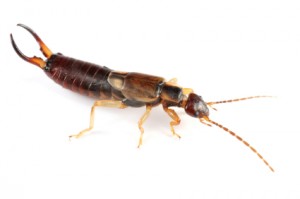
Leave a Reply